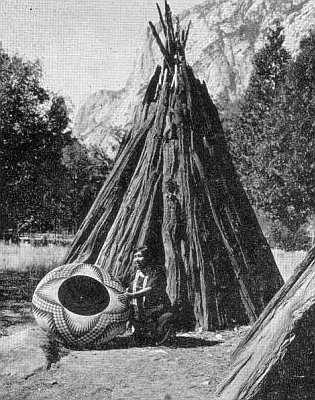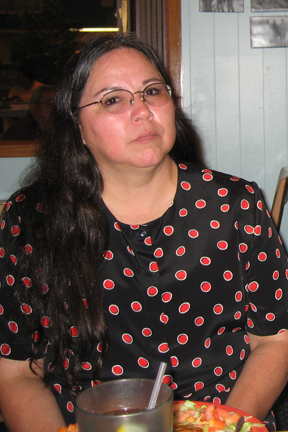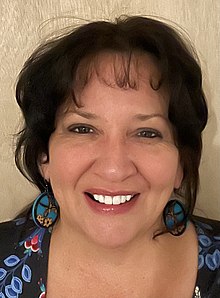
The Ojibwe are an Anishinaabe people whose homeland covers much of the Great Lakes region and the northern plains, extending into the subarctic and throughout the northeastern woodlands. Ojibweg are known by several names, including Ojibway or Chippewa. As a large ethnic group, several distinct nations also understand themselves to be Ojibwe as well, including the Saulteaux, Nipissings, and Oji-Cree.

A basket is a container that is traditionally constructed from stiff fibers, and can be made from a range of materials, including wood splints, runners, and cane. While most baskets are made from plant materials, other materials such as horsehair, baleen, or metal wire can be used. Baskets are generally woven by hand. Some baskets are fitted with a lid, while others are left open on top.

The Potawatomi, also spelled Pottawatomi and Pottawatomie, are a Native American people of the Great Plains, upper Mississippi River, and western Great Lakes region. They traditionally speak the Potawatomi language, a member of the Algonquian family. The Potawatomi call themselves Neshnabé, a cognate of the word Anishinaabe. The Potawatomi are part of a long-term alliance, called the Council of Three Fires, with the Ojibway and Odawa (Ottawa). In the Council of Three Fires, the Potawatomi are considered the "youngest brother". Their people are referred to in this context as Bodéwadmi, a name that means "keepers of the fire" and refers to the council fire of three peoples.

The Odawa are an Indigenous American people who primarily inhabit land in the Eastern Woodlands region, now in jurisdictions of the northeastern United States and southeastern Canada. Their territory long preceded the creation of the current border between the two countries in the 18th and 19th centuries.

Basket weaving is the process of weaving or sewing pliable materials into three-dimensional artifacts, such as baskets, mats, mesh bags or even furniture. Craftspeople and artists specialized in making baskets may be known as basket makers and basket weavers. Basket weaving is also a rural craft.

The Institute of American Indian Arts (IAIA) is a public tribal land-grant college in Santa Fe, New Mexico, United States. The college focuses on Native American art. It operates the Museum of Contemporary Native Arts (MoCNA), which is housed in the historic Santa Fe Federal Building, a landmark Pueblo Revival building listed on the National Register of Historic Places as Federal Building. The museum houses the National Collection of Contemporary Indian Art, with more than 7,000 items.
Birchbark biting is an Indigenous artform made by Anishinaabeg, including Ojibwe people, Potawatomi, and Odawa, as well as Cree and other Algonquian peoples of the Subarctic and Great Lakes regions of Canada and the United States. Artists bite on small pieces of folded birch bark to form intricate designs.
Woodlands style, also called the Woodlands school, Legend painting, Medicine painting, and Anishnabe painting, is a genre of painting among First Nations and Native American artists from the Great Lakes area, including northern Ontario and southwestern Manitoba. The majority of the Woodland artists belong to the Anishinaabeg, notably the Ojibwe, Odawa, and Potawatomi, as well as the Oji-Cree and the Cree.

The visual arts of the Indigenous peoples of the Americas encompasses the visual artistic practices of the Indigenous peoples of the Americas from ancient times to the present. These include works from South America and North America, which includes Central America and Greenland. The Siberian Yupiit, who have great cultural overlap with Native Alaskan Yupiit, are also included.
Annie Antone is a Native American Tohono O'odham basket weaver from Gila Bend, Arizona.
The Match-e-be-nash-she-wish Band of Pottawatomi Indians of Michigan is a federally recognized tribe of Potawatomi people in Michigan named for a 19th-century Ojibwe chief. They were formerly known as the Gun Lake Band of Grand River Ottawa Indians, the United Nation of Chippewa, Ottawa and Pottawatomi Indians of Michigan, Inc., and the Gun Lake Tribe or Gun Lake Band. They are headquartered in Bradley, Michigan.

Mary Kawennatakie Adams was a Canadian Mohawk First Nations textile artist and basket maker.

Lisa Telford is a Git'ans Git'anee Haida weaver who creates contemporary garments, shoes and other objects using Northwest Coast style weaving techniques. Her work serves as a commentary on Native identity, stereotypes and fashion.
Mary Leaf (1925–2004) was an Akwesasne Mohawk basket maker, who lived on the border between Canada and the United States. Leaf specialized in basket making, having learned customary basketry techniques from her mother. Her work can be found in the collections of the Newark Museum and the National Museum of the American Indian.

April Stone is a basket weaver, who is a member of the Bad River Band of Lake Superior Chippewa (Ojibwe) from Wisconsin. Stone is a full-time artisan who teaches classes and sells her baskets all over the Midwest.

Mary Holiday Black was a Navajo basket maker and textile weaver from Halchita, Utah. During the 1970s, in response to a long-term decline in Navajo basketry, Black played a key role in the revival of Navajo basket weaving by experimenting with new designs and techniques, pioneering a new style of Navajo baskets known as "story baskets."
Yvonne Walker Keshick is an Anishinaabe quillwork artist and basket maker.
Patrick William Kruse, also known as Pat Kruse, is a Native American culture teacher and artist that specializes in birchbark art and quillwork. He works alongside his son Gage to create birch bark paintings.

Cherish Nebeshanze Parrish is a black ash basket maker and birchbark biter. She is a member of the Match-e-be-nash-she-wish Band of Pottawatomi Indians of Michigan and of Odawa descent.













